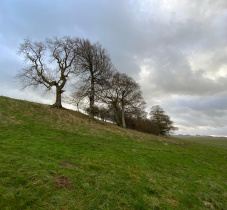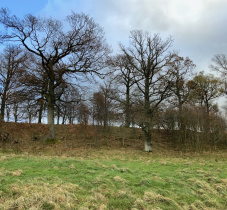Project description
Reforest'Action and Sylva Nova invite you to participate in the restoration of an abandoned farmland in the UK !
The project at a glance
- Number of trees to be planted: 20,000
- Plantation area: 5 hectares
- Species planted: oak, hawthorn, apple, hazelnut, cherry, neprun, alder, blackthorn, wild rose, holly
- Project type: planting of a neglected farmland
- Season of plantation: Winter 2023
The origin of the project
Located in the United Kingdom, close to the Lake District National Park, a UNESCO World Heritage Site, this project takes root in the center of agricultural land.
The primary objective is to protect the young oak shoots already present on the plots by surrounding them with country species to accompany their growth. Thus, 12,000 trees will be introduced, made up of a panel of 7 different species. In addition, the owner also wishes to plant 500 additional oaks to densify the future stand. The second objective is to restructure the agricultural plots through the planting of 8,000 trees composed of 11 species of hedgerows. The hedges have a windbreak effect and the shading will optimize the comfort of the livestock. The project will also promote biodiversity, increase crop yields and limit soil erosion. They are also an important component of the local historic landscape, while contributing to the fight against climate change through carbon storage. In addition, the project will benefit the wood industry, which can be supplied in the long term, facilitating a sustainable energy transition.
Generated benefits
-
Fight against climate change: trees provide fruit, fodder, wood, resins, tannins etc. Once planted, they regulate temperatures through the shade of their foliage. Carbon sinks, they store CO₂ and are valuable allies in the fight against global warming. They restore soil fertility and prevent soil erosion.
-
Development of biodiversity: agroforestry promotes biodiversity and provides multiple habitats and species. Micro-organisms, fauna and flora participate in the restoration of an ecological network. They provide refuges for birds that regulate pest populations on crops.
-
Protection of territories: the trees regenerated in agroforestry help to protect the land from extreme weather events. By creating shaded areas, the trees preserve the crops during the dry season and provide them with a protective cover during the rainy season.
-
Soil enrichment: the leaves fallen from the trees will allow the creation of organic matter that will enrich the soils and contribute to the proper functioning of the forest ecosystem.
-
Wood supply: eventually, some mature trees may be harvested to supply the timber industry, economic lung that needs to operate a sustainable energy transition.
-
Soil nutrition: trees retain rainwater on the soil surface and filter it before it enters the water table. Thus, forest canopies regulate the water cycle and help preserve the planet's water resources.





